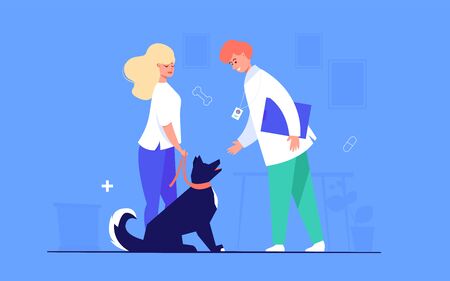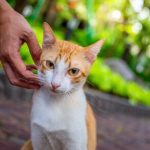1. Toxic Foods and Household Items
Many common foods and household products, such as chocolate, grapes, xylitol, and cleaning supplies, can be toxic to pets. Understanding which items are dangerous and how to store them properly can help keep your furry friends safe.
Common Toxic Foods
Certain human foods can be extremely harmful to pets. Even small amounts of these items can cause serious health problems. Below is a list of some of the most dangerous foods for pets:
| Food | Why Its Dangerous |
|---|---|
| Chocolate | Contains theobromine, which can cause vomiting, diarrhea, seizures, and even death. |
| Grapes & Raisins | Can cause kidney failure in dogs. |
| Xylitol (found in sugar-free gum and candy) | Can cause rapid insulin release, leading to hypoglycemia (low blood sugar) and liver damage. |
| Onions & Garlic | Can damage red blood cells, leading to anemia. |
| Caffeine (coffee, tea, energy drinks) | Affects the heart and nervous system, potentially leading to fatal complications. |
Toxic Household Products
Apart from food, many everyday household products can also pose a risk to pets. Cleaning supplies, medications, and certain plants can be highly toxic. Here are some examples:
- Chemical Cleaners: Bleach, disinfectants, and other strong cleaning agents can cause respiratory issues or poisoning if ingested.
- Pest Control Products: Rat poison, insecticides, and antifreeze are extremely toxic and should be kept out of reach.
- Certain Plants: Lilies (toxic to cats), poinsettias, and aloe vera can cause digestive issues or worse if ingested by pets.
- Human Medications: Pain relievers like ibuprofen and acetaminophen can be deadly for pets even in small doses.
Tips for Preventing Accidental Poisoning
The best way to protect your pet from toxic substances is through careful storage and awareness. Follow these tips to prevent accidental poisoning:
- Store Food Securely: Keep chocolate, grapes, xylitol-containing products, and other harmful foods in high cabinets or locked pantries.
- Keeps Medications Away: Never leave pills or bottles within a pet’s reach.
- Create a Pet-Safe Cleaning Routine: Use pet-friendly cleaners when possible and store stronger chemicals in secure locations.
- Avoid Harmful Plants: Research pet-safe plants before bringing them into your home.
- Easily Access Emergency Contacts: Keep your veterinarian’s number handy in case of accidental ingestion.
If you suspect that your pet has ingested something toxic, contact your veterinarian or an emergency pet poison helpline immediately. Quick action could save their life.
2. Electrical Cords and Small Objects
Pets, especially puppies and kittens, may chew on electrical cords or swallow small objects, leading to choking or electrocution. To keep your furry friends safe, its important to pet-proof your home and eliminate these hazards.
Why Are Electrical Cords Dangerous?
Chewing on electrical cords can cause severe injuries, including burns, shocks, and even fatal electrocution. Pets may be drawn to cords because they resemble chew toys or because they like the texture.
How to Prevent Cord-Related Accidents
- Use Cord Covers: Protect exposed cords with plastic or fabric cord covers to prevent chewing.
- Keep Cords Out of Reach: Arrange furniture to hide cords behind or under heavy objects.
- Unplug When Not in Use: If possible, unplug appliances when they are not in use.
- Apply Deterrent Sprays: Use pet-safe bitter sprays to discourage chewing.
- Provide Safe Alternatives: Offer appropriate chew toys to redirect their attention.
The Risk of Small Objects
Puppies, kittens, and curious pets may swallow small objects such as coins, buttons, hair ties, or childrens toys. These items can cause choking or intestinal blockages, which may require emergency surgery.
Common Household Items That Pose a Risk
| Hazardous Item | Potential Danger |
|---|---|
| Batteries | Toxic if ingested; can cause internal burns |
| Socks and Fabric Scraps | May lead to dangerous intestinal blockages |
| Tiny Toys and Figurines | Choking hazard and risk of digestive obstruction |
| Pennies and Coins | Toxic due to zinc content; may cause poisoning |
| Pins, Needles, and Paperclips | Piercing injuries or internal damage if swallowed |
Tips for Keeping Small Objects Away from Pets
- Categorize and Store Properly: Keep small household items in drawers or containers with lids.
- Avoid Leaving Items on the Floor: Pick up stray objects that could be a temptation for pets.
- Create Pet-Free Zones: Restrict access to rooms where small objects are frequently used.
- Select Pet-Safe Toys: Ensure all pet toys are size-appropriate and cannot be easily swallowed.
- Sweep and Vacuum Regularly: Remove small debris that could pose a danger.
A little precaution goes a long way in preventing accidents. By securing electrical cords and keeping hazardous small objects out of reach, you can create a safer environment for your pets.

3. Indoor and Outdoor Plants
Many popular plants, like lilies, poinsettias, and certain ferns, can be harmful to cats and dogs if ingested. While greenery can add beauty to your home, some plants pose serious risks to your pets’ health. Knowing which plants to avoid and how to create a pet-friendly environment is essential for keeping your furry friends safe.
Common Toxic Plants
Here are some common household and garden plants that can be toxic to pets:
| Plant Name | Toxic to | Potential Effects |
|---|---|---|
| Lilies (Easter, Tiger, Daylily) | Cats | Kidney failure, vomiting, lethargy |
| Poinsettias | Cats & Dogs | Mild irritation, drooling, vomiting |
| Sago Palm | Cats & Dogs | Liver damage, vomiting, seizures |
| Aloe Vera | Cats & Dogs | Diarhhea, vomiting, tremors |
| Ivy (English Ivy) | Cats & Dogs | Mouth irritation, difficulty breathing |
| Daffodils | Cats & Dogs | Nausea, heart arrhythmia, convulsions |
| Tulips | Cats & Dogs | Irritation in mouth, drooling, digestive issues |
| Dumb Cane (Dieffenbachia) | Cats & Dogs | Painful swelling in mouth and throat |
| Mistletoe | Cats & Dogs | Drooling, vomiting, diarrhea, low heart rate |
| Oleander | Cats & Dogs | Lethargy, irregular heartbeat, death in severe cases |
Create a Pet-Safe Environment
If you love having plants around but want to keep your pets safe, here’s what you can do:
Avoid Toxic Plants Altogether
The best way to prevent plant-related poisoning is to avoid keeping dangerous plants in your home or yard. Choose pet-safe alternatives instead.
Keep Plants Out of Reach
If you have plants that may be mildly irritating but not highly toxic, place them on high shelves or in hanging planters where pets cant access them.
Create a Designated Plant Area
If youre an avid plant lover, consider setting up a separate space for your plants that your pets cannot enter. A greenhouse or enclosed balcony can work well.
Select Pet-Friendly Plants Instead
If you want greenery in your home while ensuring your pets safety, opt for non-toxic plants such as:
- Boston Ferns
- Bamboo Palm
- African Violets
- Ponytail Palms
What to Do If Your Pet Eats a Toxic Plant?
If you suspect your pet has ingested a poisonous plant, take action immediately:
- Identify the plant. Try to determine what was eaten so you can inform the vet.
- Look for symptoms. Watch for signs like vomiting, drooling, lethargy, or difficulty breathing.
- Contact your vet or animal poison control.
- Avoid home remedies. Some treatments can make things worse—always follow professional advice.
You can reach out to the ASPCA Animal Poison Control Center (APCC), which operates 24/7 at (888) 426-4435.
A Safe Home for You and Your Pets!
Your home should be a place where both you and your pets feel comfortable. By choosing safe plants and keeping harmful ones away from curious paws, you can enjoy a beautiful green space without putting your furry friends at risk.
4. Medications and Personal Care Products
Many common household medications and personal care products can be extremely dangerous for pets if ingested. Even small amounts of certain drugs can cause serious health issues or even be fatal. It’s crucial to keep all medications and personal care products out of your pet’s reach.
Dangerous Human Medications
Some of the most harmful human medications for pets include:
| Medication Type | Potential Effects on Pets |
|---|---|
| Pain relievers (e.g., ibuprofen, acetaminophen) | Kidney failure, liver damage, stomach ulcers |
| Antidepressants | Lethargy, tremors, seizures, heart problems |
| Cold and flu medicines | Toxicity due to decongestants and other ingredients |
| Blood pressure medication | Dizziness, weakness, dangerously low blood pressure |
| Sedatives and sleep aids | Drowsiness, difficulty breathing, coma |
Personal Care Products That Pose a Risk
Apart from medications, personal care products like lotions, shampoos, and cosmetics can also be toxic to pets if ingested. Some common hazards include:
- Xylitol-containing products: Found in sugar-free gum, toothpaste, and some skincare items; can cause severe hypoglycemia in dogs.
- Sunscreen and lotions: Ingredients like zinc oxide can be harmful if licked off fur.
- Mouthwash: Many contain ethanol or boric acid, both of which are toxic to pets.
- Nail polish and remover: Acetone and other chemicals can cause vomiting and respiratory distress.
How to Store Medications and Personal Care Items Safely
The best way to prevent accidental ingestion is by securely storing all medications and personal care products. Follow these safety tips:
- Keeps meds in closed cabinets: Store all prescription and over-the-counter drugs in locked or high cabinets that pets cannot access.
- Avoid leaving products on countertops: Never leave pill bottles, lotions, or personal care items within reach of curious pets.
- Keeps travel bags secured: If you carry medications or personal care products in purses or backpacks, store them where your pet cant get into them.
- Pill organizers should stay closed: Many pets are attracted to the rattling sound of pill containers—always keep them securely shut.
- Tidy up immediately after use: Put away any medication or grooming product immediately after using it to prevent accidental exposure.
What to Do If Your Pet Ingests Medication?
If you suspect your pet has swallowed medication or a personal care product:
- Stay calm but act fast.
- Check the packaging: Identify what was ingested and how much.
- Call your vet immediately: Provide details about the substance taken.
- Contact a pet poison control center:
- Avoid home remedies unless instructed by a vet:
- If advised, take your pet to the nearest emergency vet clinic.
Your pets safety depends on keeping potentially hazardous substances out of their reach. By taking simple precautions and acting quickly in emergencies, you can help prevent serious health risks associated with medications and personal care products.
5. Household Appliances and Hidden Dangers
Our homes are filled with appliances that make life easier, but some of these everyday items can pose serious risks to pets. Curious cats and dogs may explore small spaces, climb into machines, or drink from unsafe water sources. Understanding these potential dangers is key to keeping your furry friend safe.
Washing Machines and Dryers
Many pets, especially cats, love to snuggle up in warm, enclosed spaces. Unfortunately, this means they might climb into an open washer or dryer without you noticing. If the machine is turned on while they are inside, it can lead to severe injury or even be fatal.
How to Keep Your Pet Safe:
- Always check inside the washer and dryer before starting a cycle.
- Keep the doors to these appliances closed when not in use.
- Consider placing a pet-proof lock on the doors if your pet is particularly curious.
Toilets
A toilet may seem harmless, but it can be dangerous for small pets. Some pets like to drink from toilet bowls, which exposes them to harmful bacteria and cleaning chemicals. Small pets could also fall in and struggle to get out.
How to Keep Your Pet Safe:
- Always keep the toilet lid closed when not in use.
- Avoid using chemical toilet bowl cleaners that could be toxic if ingested.
- If your pet tends to drink from the toilet, provide fresh water in a clean bowl at all times.
Recliners and Folding Furniture
Pets love to curl up under furniture or squeeze into tight spaces. Recliners, fold-out couches, and other moving furniture can accidentally trap or injure them.
How to Keep Your Pet Safe:
- Always check under and around reclining chairs before adjusting them.
- If you have a fold-out couch or bed, ensure your pet isn’t hiding inside before using it.
- Create a comfortable pet bed away from these risky areas so they have a safer place to relax.
A Quick Safety Guide for Common Household Appliances
| Appliance | Main Hazard | Prevention Tips |
|---|---|---|
| Washing Machine & Dryer | Pets climbing inside and getting trapped or injured | Keep doors closed; always check before use; consider pet-proof locks |
| Toilet | Pets drinking harmful water or falling in | Keep the lid down; avoid toxic cleaners; provide fresh water |
| Recliners & Folding Furniture | Pets getting trapped or crushed when moved | Check under furniture before adjusting; provide a safe resting spot for pets |
Your home should be a safe haven for your pet. By being aware of potential dangers and taking simple precautions, you can prevent accidents and create a secure environment for your furry companion.


